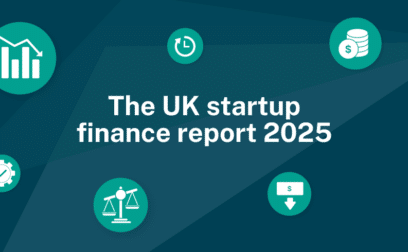TABLE OF CONTENTS








Page written by Ian Hawkins. Last reviewed on May 15, 2025. Next review due April 6, 2026.

If you’re a wholesaler, distributor or importer, a trade finance loan can give you the cash you need to buy inventory or stock from a supplier, in order to fulfil an order. It’s a form of working capital finance. It falls under the broader banner of trade finance.
Trade finance is an umbrella term that covers many financial products and instruments used by businesses to reduce the risk of trading abroad. These risks are specifically related to importing, exporting and domestic trade. Trade finance is a broad term that encompasses a range of financial products utilised by banks and companies to make trade transactions possible.
For example, a trade finance loan can give you the cash you need to buy inventory, or stock from a supplier, in order to fulfil an order. In this narrow definition of trade finance, it’s another form of working capital finance and has a lot in common with purchase order finance and supplier finance.
As an example, let’s imagine that you have a confirmed purchase order from a customer and wish to either import stock or inventory, or export products for resale. This is the point at which you could contact a trade finance lender. The lender would look at you favourably if both your customer and supplier were established businesses. Their loan would pay your supplier (in this case the exporter) before you (the importer) receive the goods.
Effectively, your trade finance lender acts as a third party to mitigate payment risk and supply risk, which means that goods can be shipped to you more quickly, so that you can fulfil your order.
A trade finance loan (trade loan) works like this:
The loan helps you close the payment gap at the beginning of your sales cycle. It can also work alongside any existing finance your business might have, such as invoice factoring or asset finance.
Some people refer to a trade finance loan as ‘trade finance’. At Swoop, trade finance is a catch-all term for a much broader range of products and instruments designed for businesses who trade internationally. These include trade finance loans (as described here), invoice factoring, supplier finance and export finance.
Trade finance loans (or ‘trade finance’ if you are using the narrow definition) are based on purchase orders and are therefore sometimes referred to as purchase order finance or import finance.
It’s easy to confuse a trade finance loan (or ‘trade finance’ if you are using the narrow definition) with supplier finance (or supply chain finance), because a trade finance loan helps you fund the beginning of your supply chain. You should be aware, however, that supplier finance is a different type of business lending that buyers offer to their suppliers.
Trade finance mitigates potential risks to businesses that carry out international and domestic trade. These risks may include:
Trade finance helps to mitigate these risks by providing financial instruments such as letters of credit, trade guarantees and documentary collections that ensure payment and delivery of goods.
Beyond all of this, trade finance also offers other services such as financing working capital and providing credit insurance, which are essential for companies engaged in international trade to grow their business.
Overall, trade finance plays a vital role in facilitating global trade and ensuring that trade transactions are executed efficiently, safely and securely.
As well as mitigating the risks outlined above, trade finance offers a number of benefits for businesses engaged in international trade. Here are some of the key advantages:
Improved cash flow
Access to capital
Market expansion
Enhanced supply chain efficiency
Competitive advantage
Taken together, the benefits of trade finance are that businesses are empowered to navigate the complexities of international trade, mitigate risks, optimise cash flow and unlock new growth opportunities. By leveraging these benefits, businesses can strengthen their position in the global marketplace.
Trade finance is an attractive proposition for businesses engaged in a wide range of activities including:
Exporters
Importers
Other eligible businesses
Eligibility criteria may vary depending on the specific financial institution or provider. Lenders will consider the following factors:
By meeting these eligibility criteria, businesses can access a range of trade finance solutions to support their international trade activities and drive growth.
Swoop can help you find a trade finance deal that works for your business needs. Swoop covers the whole of the market and makes comparing deals easy, so you know exactly what you’re getting and what it will cost. To get started, register with Swoop today.
Written by
Ian Hawkins is Head of Content at Swoop. As a freelance business journalist and filmmaker he has reported from Europe, Central and North America and Africa. His films and writing have appeared on BBC World, Reuters and CBS, and he has spoken at conferences on both sides of the Atlantic on subjects including data, cyber security, and entrepreneurialism.
Swoop promise
At Swoop we want to make it easy for SMEs to understand the sometimes overwhelming world of business finance and insurance. Our goal is simple – to distill complex topics, unravel jargon, offer transparent and impartial information, and empower businesses to make smart financial decisions with confidence.
Find out more about Swoop’s editorial principles by reading our editorial policy.
Get your free trade finance quote today
Apply in minutes
FREE no obligation, personalised
quote
G
E
T
Q
U
O
T
E
Join the 110,000+ businesses just like yours getting the Swoop newsletter.
Free. No spam. Opt out whenever you like.



























We work with world class partners to help us support businesses with finance
Kingfisher Way, Silverlink Business Park, Newcastle upon Tyne, NE28 9NX, UK
View in Google MapsAberystwyth Innovation and Enterprise Campus
Gogerddan Campus
Aberystwyth University
Ceredigion
SY23 3EE
Dogpatch Labs, The CHQ Building, Custom House Quay, Dublin, Ireland
View in Google MapsSuite 801, Level 8, 84 Pitt Street, Sydney, NSW 2000, Australia
View in Google Maps43 W 23rd St, New York, NY 10010, United States
View in Google Maps21 Dreyer Street, Cape Town, South Africa, 7708
View in Google Maps
Disclaimer: Swoop Finance helps UK firms access business finance, working directly with businesses and their trusted advisors. We are a credit broker and do not provide loans or other finance products ourselves. We can introduce you to a panel of lenders, equity funds and grant agencies. Whichever lender you choose we may receive commission from them (either a fixed fee of fixed % of the amount you receive) and different lenders pay different rates. For certain lenders, we do have influence over the interest rate, and this can impact the amount you pay under the agreement. All finance and quotes are subject to status and income. Applicants must be aged 18 and over and terms and conditions apply. Guarantees and Indemnities may be required. Swoop Finance can introduce applicants to a number of providers based on the applicants’ circumstances and creditworthiness. Swoop Finance Limited is registered with the Financial Conduct Authority as an Account Information Services Provider (reference number 833145). Swoop Finance Limited is authorised as a credit broker under FCA registration number 936513. If you feel you have a complaint, please read our complaints section highlighted above and also contained within our terms and conditions. Swoop Finance Ltd is registered with Companies House (company number 11163382, registered address The Stable Yard, Vicarage Road, Stony Stratford, Milton Keynes MK11 1BN). VAT number: 300080279
Clever finance tips and the latest news
Delivered to your inbox monthly
Join the 110,000+ businesses just like yours getting the Swoop newsletter. Free. No spam. Opt out whenever you like.
Thanks for requesting a call back
a member of the team will be in touch.




